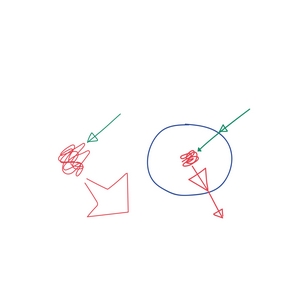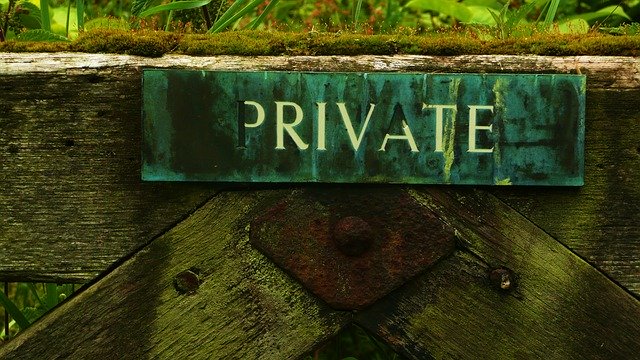In freeing ourselves from a dysregulated nervous system, an important step is learning how to reframe our experiences and manage our triggers, reactions, and baggage. We need to do this so that we are no longer subject to learned ways of behaviour that negatively impact our lives and the relationships we have with others.
The goal is to go from the diagram on the left below to the one on the right.

In the diagram on the left, in which our baggage is represented by the red squiggle, triggers are the green arrow, and our reaction is the red arrow, you can see a dysregulated nervous system – one that overreacts to the trigger. The diagram on the right represents a nervous system that is well regulated as a result of using boundaries and containment.
To reframe our experiences, we must bring attention to our triggers, our baggage, and our reactions. It’s easy to consider ourselves the victim in situations that trigger us and make us feel unsafe, but there is very little we can do to control what life throws at us. What we can do, however, is use boundaries and containment to lessen the impact that our triggers have on our baggage. When we do this, we create something like a shield around that vulnerable, wounded part of ourselves.
The whole process of regulating the nervous system would be far easier if we experienced fewer triggers less often. So, keeping things manageable is a priority and to do this, we can use boundaries to begin to build a bubble of containment around our dysregulated nervous system. But how do we know in practice exactly what those boundaries should be?
Let’s look at the following story about housemates Sue and Ann.
Sue and Anne are flatmates. They met through friends and although they get on well enough, they have quite separate lives. One day Sue comes home, looking forward to the leftovers from a dinner she cooked for a friend the night before. But the food has already been eaten; the Tupperware is empty and not even washed up in the sink. She’s upset because she’d made no other arrangements for dinner. She’s exhausted and could have picked something up on the way home. However, now she’s nervous because she doesn’t know what to say to Anne. She doesn’t want there to be an atmosphere in the house, but equally it just doesn’t feel right just to ignore it. After all, things like this have happened before. Anne comes in later while Sue is watching TV.
In talking about her triggers, reactions, and baggage, Sue could explain to Ann:
“When I think people have taken my stuff at home that’s a trigger for me.
Here Sue has carefully identified her trigger. She then manages her reaction by adding:
‘And I’m feeling really scared to talk about it, like it’s not OK or something bad will happen to me.’
Sue the shares her baggage with Ann, by saying:
That reminds me so much of being at home with my siblings. I never felt like I had any privacy but we couldn’t complain because my parents were so overwhelmed by my sick brother.”
From here, Sue can put a boundary in place by saying:
“I’m going to make it really clear what’s mine and what I need to have left alone rather than to share with you. I hope that’s OK. I’ll find a way to do that in the kitchen and the bathroom to make it easier for you.”
This avoids shifting the blame onto the other person. Sue is setting up Anne to be able to help her to get what she needs. She is also making her needs crystal clear. If this doesn’t work, then she is most likely going to have to move out, but she is giving both of them the best chance to avoid that by being really clear with herself where the original problem came from, and then, from this place of clarity, making a plan to reduce this trigger in her home as much as she can. Also, it is kind to Anne. Sue is allowing Anne to see into the window of her nervous system to understand where all of this is coming from. That makes it less weird for Anne and makes her more likely to want to help.
So, once you find the boundary, which protects you from a trigger, take responsibility for making sure that you take care of you. And when you do, you can start to solve all your other problems from a different, more regulated place.
You can download this post in a handy 2-page PDF to print and share with friends, family, clients or colleagues. Follow this link to download now.
You can buy a copy of The Invisible Lion now on kindle or paperback from your local Amazon store. Just click here to buy now.


